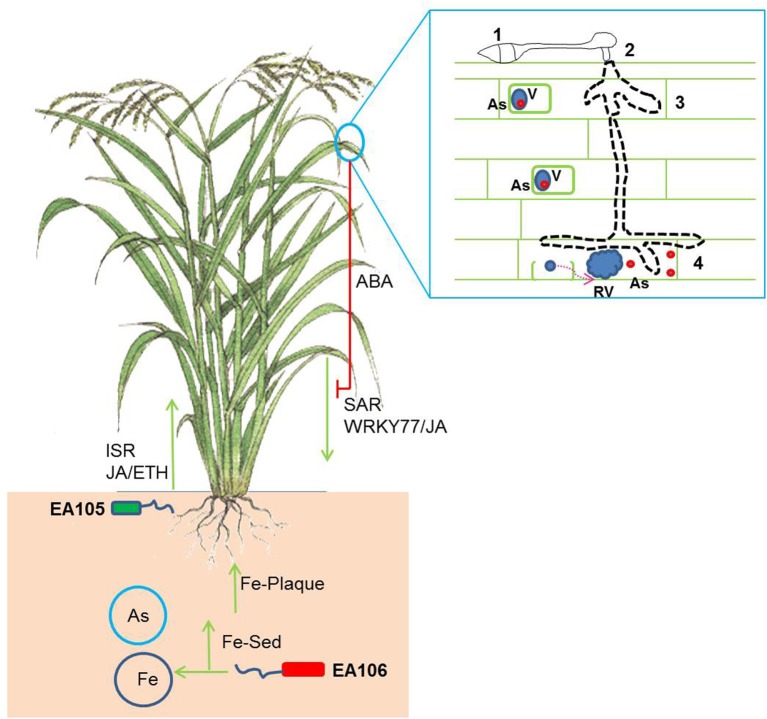Figure 6.
A schematic showing the complex multi-trophic interaction in rice subjected to rhizospheric microbes, As-rich environment and blast infection. The natural rice isolates EA105 and EA106 trigger induced systemic defense response (ISR) against rice blast infection. EA106 mobilizes rhizospheric iron (Fe) via siderophore (Fe-Sed) activity and triggers Fe-plaque formation on roots impeding As mobilization in plants. M. oryzae infection also induces systemic acquired defense (SAR) response in plants leading to resistance against blast infection. In addition, blast fungus suppresses SAR by producing abscisic acid (ABA). The implication of As (red circles) cellular localization may also be modulated under M. oryzae infection. As localized in specialized organelles (blue circles- v = vacuoles) may get released in planta post disruption of cellular organelles (RV = ruptured vacuoles) by rice blast. The boxed panel shows different stages of infection of rice blast: 1. Germ tube and appresorria formation; 2–3. Peg formation and mycelial growth; 4. Cellular rupture by mycelial growth and As release.

